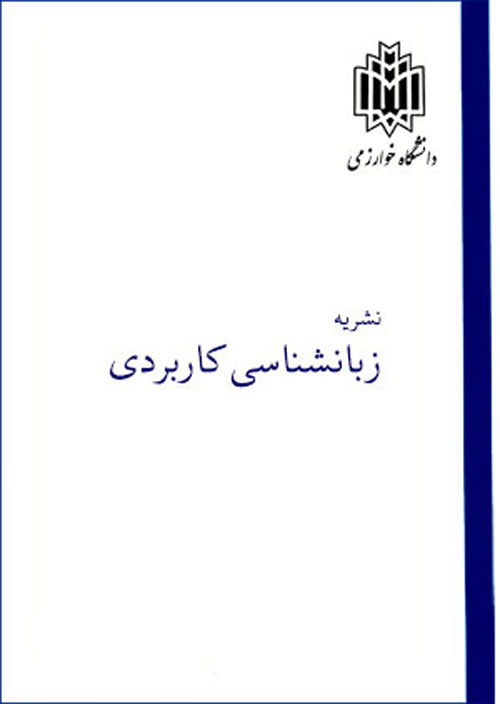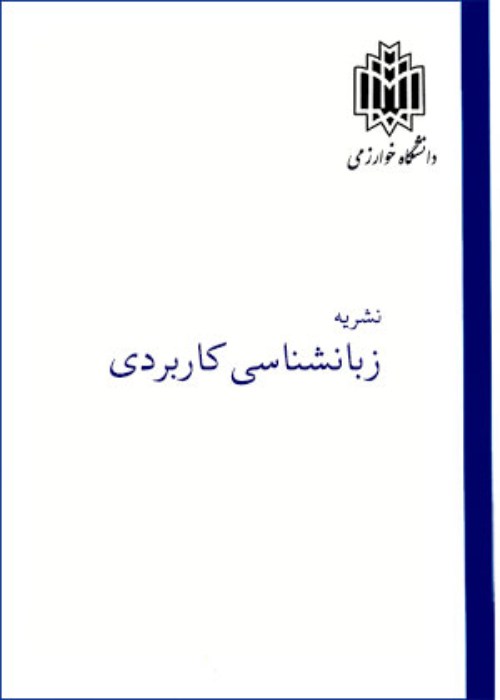فهرست مطالب

Iranian Journal of Applied Linguistics
Volume:22 Issue: 2, Sep 2019
- تاریخ انتشار: 1399/11/04
- تعداد عناوین: 6
-
-
Pages 1-35
This study aimed at investigating the comparative effect of using self-assessment vs. peer-assessment on young EFL learners’ performance on selective and productive reading tasks. To do so, 56 young learners from among 70 students in four intact classes were selected based on their performance on the A1 Movers Test. Then, the participants were randomly divided into two groups, self-assessment and peer-assessment. The reading section of a second A1 Movers Test was adapted into a reading test containing 20 selective and 20 productive items, and it was used as the pretest and posttest. This adapted test was piloted and its psychometric characteristics were checked. In the self-assessment group, the learners assessed their own performance after each reading task while in the peer-assessment group, the participants checked their friends’ performance in pairs. The data were analyzed through repeated-measures two-way ANOVA and MANOVA. The findings indicated that self-assessment and peer-assessment are effective in improving young EFL learners’ performance on both selective and productive reading tasks. Further, neither assessment method outdid the other in improving students’ performance on either task. These findings have practical implications for EFL teachers and materials developers to use both assessment methods to encourage learners to have better performance on reading tasks.
Keywords: Peer-assessment, Productive tasks, Reading comprehension, Selective tasks, Self-assessment, Young learners -
Pages 36-70
Finding out which lexico-semantic features of cognates are critical in cross-language studies and comparing these features with noncognates helps researchers to decide which features to control in studies with cognates. Normative databases provide necessary information for this purpose. Such resources are lacking in the Persian language. We created a dataset and determined norms for the essential lexico-semantic features of 288 cognates and noncognates and matched them across conditions. Furthermore, we examined the relationship between these features and the response time (RT) and accuracy of responses in a masked-priming lexical decision task. This task was performed in English by Persian-English speakers in conditions where the prime and target words were related or unrelated in terms of meaning and/or form. Overall, familiarity with English words and English frequency were the best predictors of RT in related and unrelated priming conditions. Pronunciation similarity also predicted RT in the related condition for cognates, while the number of phonemes in the prime predicted RT for the unrelated condition. For both related and unrelated conditions, English frequency was the best predictor for noncognates. This bilingual dataset can be used in bilingual word processing and recognition studies of cognates and noncognates.
Keywords: Persian-English dataset, Cross-language studies, Bilingual word recognition, Cognates, noncognates, Lexical decision task, Priming -
Pages 73-109
The present research aims to examine the effects of using culturally oriented texts in project-based classes on the views of EFL university students regarding their L1 culture. To this end, three experimental groups of intermediate EFL freshmen, assigned to classes A, B and C, participated in this study. Each of the classes were presented with reading passages focused on L1 culture, L2 culture, and a combination of both L1 and L2 culture, respectively. A written two-question structured interview was designed by the researchers to gain in depth detailed information about the studentschr('39') views regarding L1 culture in each class. The interviews were then examined using content analysis. Findings revealed the effectiveness of the combined approach (i.e. the use of reading materials focused on L1 and L2 culture) in establishing more positive views about L1 culture in students. The results can provide insightful recommendations and implications for EFL instructors, educational materials developers and educational policy makers.
Keywords: Culturally oriented texts, Project-based learning, L1 Culture -
Pages 109-144
Content and Language Integrated Learning (CLIL) has recently been the focus of numerous studies in language education since it aims to overcome the pitfalls of form-focused and meaning-focused instruction by systematically integrating content and language. This meta-analysis aims to synthesize the findings of 22 primary studies that tested the effect of CLIL on language skills and components. Guiding the analysis are three questions: What is the overall combined effect of CLIL on language skills and components? How do moderators condition the effect of CLIL? To what extent the overall combined effect is conditioned by publication bias? The overall effect size was found to be g=0.81, which represents a medium effect size with respect to Plonsky and Oswald’s (2014) scale. The results of moderator analysis show that CLIL has the highest effect on students’ grammar and listening proficiency and in lower levels of education, especially in elementary schools. It also has the highest effect when combined with hotel management as the subject matter. Fail-safe N test of publication bias shows that the significant positive outcome of CLIL cannot be accounted for by publication bias. The findings have clear implications for practitioners, researchers and curriculum developers.
Keywords: CLIL, skills, components, meta-analysis, effect size, publication bias -
Pages 145-184
Considering the fact that engagement with political economy is central to any fully rounded analysis of language and language-related issues in the neoliberal-stricken world today, and that applied linguistics has ignored the role of political economy (Block, Gray, & Holborow, 2012), for the first time, this study investigated the representations of neoliberal ideologies in the Interchange Third Edition Series. To this end, both quantitative and qualitative analyses were conducted based on Du Gay, Hall, Janes, Mackay, and Negus’s (1997) model of ‘Cultural Circuit’, especially their concept of ‘Representational Repertoires’. Furthermore, Kress and Van Leeuwen’s (1996) ‘visual grammar’ was used for the analysis of the artwork. The results of the quantitative analysis revealed that more than 50% of the total number of units in each of the textbooks featured neoliberal-related content. Moreover, the results of the qualitative analysis confirmed Du Gay et al.’s (1997) argument that textbooks are not only curriculum artifacts but also cultural artifacts or communicative acts which serve to make English mean in particular ways - in this case the hegemonic culture of neoliberalism. As a result, it is necessary for EFL/ESL teachers and students to collaboratively develop counter-hegemonic discourses through critical thinking and dialogic interrogations of neoliberal discourses.
Keywords: Neoliberalism, ‘Representational Repertoires’, ‘Cultural Circuit’ -
Pages 185-242
Quality of Classroom Life is considered as a serious issue in academia around the world, and it has recently received global inquiry in EFL and ESL contexts. However, no questionnaire has been developed to assess the Iranian students’ and teachers’ attitudes towards the quality of life in the classroom. After developing a conceptual framework, the final draft of the developed questionnaire with 71 items was administered to the main sample of participants (n=150). An Exploratory Factor Analysis was performed to identify the components of the instrument, followed by Confirmatory Factor Analysis to measure its construct validity. As a result, the final draft of the Quality of Classroom Life Questionnaire comprised 71 Likert-point items. In phase 2, a number of EFL students and teachers (50 teachers and 322 students) participated in the study which was intended to observe the impact of Modular Instruction on the Quality of Classroom Life. Findings of the study suggested that: (a) the Iranian students and teachers had highly positive attitude towards the Quality of Classroom Life, and believed that educational view, teaching quality, classroom environment, classroom management, quality of classroom interactions and puzzle content played a crucial role in exploratory practice; and (b) the modular instruction which was the descendant of Postmethod instruction had a positive impact on the Quality of Classroom Life. The findings promise implications for teachers and teacher educators as well as the materials developers as the knowledge of classroom quality and modular instruction can enhance their understanding of the nature and conditions of learning.
Keywords: Attitude, Modular Instruction, Perception, Quality of Classroom Life, Questionnaire, Exploratory Practice


